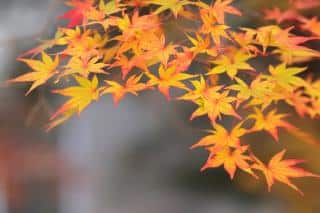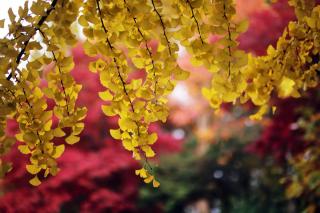

In fall, their branches seem bejeweled with gold, bronze, and ruby red colors.
Make the most of November to plant one or more of these magnificent late-summer shrubs and trees.
Fall is the best season for these trees: they burst into colors that range from yellow to deep violet. It’s a fabulous way to heat up chilly nights with spots of color now that flowers have become rare. One of these autumn stunners is Parrotia persica. Its common name is “ironwood” due to how hard and durable its wood is. The leaves of this tree are similar to those of beech and take on warm yellow, orange and red hues. It favors acidic soil, but can still grow well enough in chalky soil as long as the soil stays cool and drains well all year round.


Gold-colored leaves as well for the caramel tree (Cercidiphyllum japonicum) which takes its common name from the delicious toffee-like smell leaves release in fall as they wither. This round-leaved tree prefers neutral-to-acidic, moist soil, and loves it when air moisture is high, such as along the coast.
Another option worth looking into is burning bush (Euonymus alatus), which is covered in fall with bronze, bordeaux and red leaves. And its bright pink berries definitely catch the eye as they dot this rich-colored backdrop. It doesn’t require any care that’s out of the ordinary. It favors well-drained and cool soil, and also grows well in chalky soil. Same goes for the liquidambar tree, which has leaves similar to those of maple. These take on fire-red hues that bring warmth to fall gardens.
L. H.